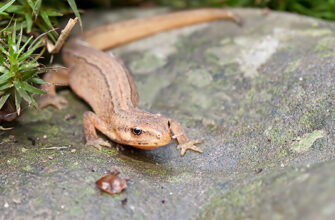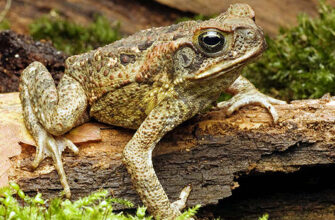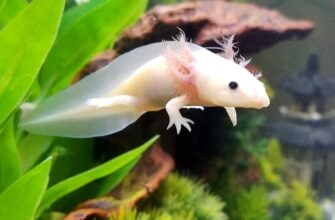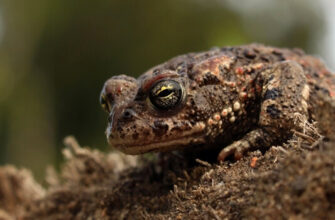The Tree Frog — This is a diverse family of amphibians, which has more than 800 species. The feature that frogs have in common is their paws — the last bone in their toes (called the terminal phalanx) is shaped like a claw. The tree frog is the only native amphibian that can climb.
Origin and description
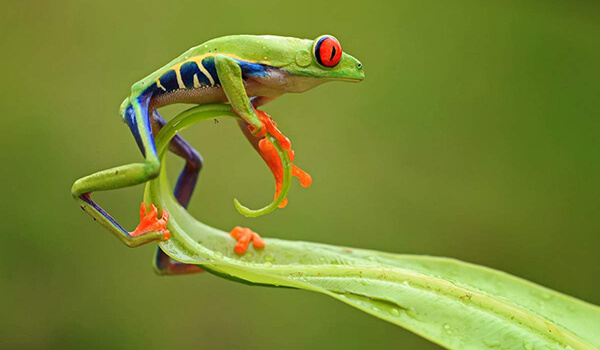
Photo: Tree Frog
There are more than 700 species in the tree frog family, belonging to about 40 genera. They are found mainly in the New World tropics, but are also present in Europe, Australia, and much of non-tropical Asia. The wood tree genus includes hundreds of species.
More famous representatives include the barking tree frog (H. gratiosa), the European green tree frog (H. arborea), whose range extends throughout Asia and into Japan, the gray tree frog (H. versicolor), green tree frog (H. cinerea), Pacific tree frog (H. regilla). Frogs — large and diverse group of amphibians. They have evolved to lead a wide variety of lifestyles.
Video: Tree Frog
This means there are some interesting facts about tree frogs:
- small size — most tree frogs are small enough to sit comfortably on the tip of a finger;
- teeth — Günther's marsupial frog (Gastrotheca guentheri) — the only frog that has teeth in its lower jaw;
- poisonousness — simply touching the yellow-striped dart frog (Dendrobates leucomelas) can lead to heart failure;
- swallowing — like many other frogs, tree frogs use their eyes to help themselves swallow their food. They close their eyes very tightly, which pushes food down their throats;
- flying frog — The Costa Rican flying tree frog has straps between its toes to help it glide between trees.
Appearance and Features
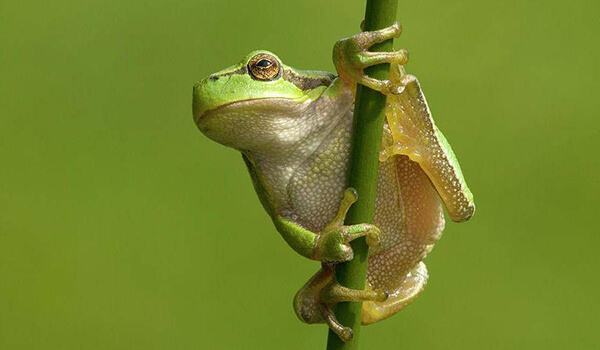
Photo: What a tree frog looks like
Tree frogs have a typical frog shape, with long hind legs and smooth, moist skin. One of the characteristic features of tree frogs is the disc-shaped adhesive pads on the toes that help them climb trees. The forward-facing eyes of tree frogs are often very large, which helps them hunt their invertebrate prey, usually at night.
Fun fact: Tree frogs can be found in a wide variety of colors, some of them very bright, although most of them are green, brown or gray. Several species may change color to blend in with the camouflage background. For example, the squirrel frog (Hyla squirella) is similar to chameleons in its ability to change color.
Although tree frogs can grow to a wide variety of sizes, most species are very small because they rely on leaves and thin branches to support their weight. At 10 to 14 cm long, the white-lipped tree frog (Litoria infrafrenata) from Australia and Oceania is the largest tree frog in the world. The largest tree frog in the United States is the non-native Cuban tree frog, which measures between 3.8 and 12.7 cm in length. The world's smallest tree frogs are less than 2.5 cm long.
The green tree frog has elongated limbs that end in toes in the form of sticky plates. Their skin is smooth on the back and grainy on the ventral side. They have a variable color: apple green, dark green, yellow, even gray, depending on certain external factors (luminosity, substrate, temperature). The male is separated from the female by his vocal sac, which is usually yellow, green or brown, turning blackish in autumn.
The gray tree frog has “warty” green, brown, or gray skin with large, darker spots on its back. Like many tree frogs, this species has large suction cup-like pads on its feet. He has a white spot under each eye and a bright yellow-orange under his thighs.
Common in the rainforests of Central America, the red-eyed tree frog has a bright green body with blue-and-yellow stripes down the sides, bright orange braid with sticky pads at the end of each finger, and bright red eyes with vertical black pupils. Its pale underside has thin, soft skin, while its back is thicker and rougher.
Where does the tree frog live?
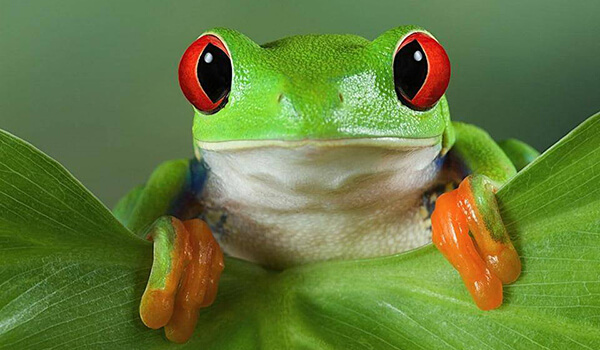
Photo: Red Eyed Tree Frog
Tree frogs are found on every continent except Antarctica, but they are most diverse in the tropics of the Western Hemisphere. About 30 species live in the United States, and over 600 can be found in South and Central America. Not surprisingly, many tree frogs are arboreal, which means they live in trees.
Special adaptations such as running boards and long legs help them climb and jump. Non-arboreal tree frogs live in lakes and ponds or among damp ground cover. Green tree frogs live in urban areas, forests and woodlands, swamps and screeches. They have a habit of settling in and around suburban homes, around shower blocks and water tanks.
Red-eyed tree frogs are found in tropical rainforests, where they are commonly found in lowland rainforest and surrounding hills, especially in areas close to rivers or ponds. Frogs with red eyes — excellent climbers that have suction cup fingers that help them attach themselves to the underside of leaves where they rest during the day. They can also be found clinging to tree branches and trunks throughout their habitat and are capable swimmers when needed.
The gray tree frog can be found in many types of tree and shrub communities located near permanent water. This species usually inhabits wooded areas, but may also frequent fruit orchards. Gray tree frog — a real “tree frog”: it can be found at the top of even the tallest trees.
These frogs are rarely seen outside of the breeding season. When not active, they hide in tree holes, under bark, in rotten logs, and under leaves and tree roots. Gray tree frogs hibernate under fallen leaves and snow cover. Their eggs and larvae develop in shallow forest ponds and swamps, puddles, forest glade ponds, swamps and many other types of permanent or temporary water bodies that do not have significant current, including ponds dug by people.
Now you know where the tree frog is found. Let's see what this frog eats.
What does a tree frog eat?
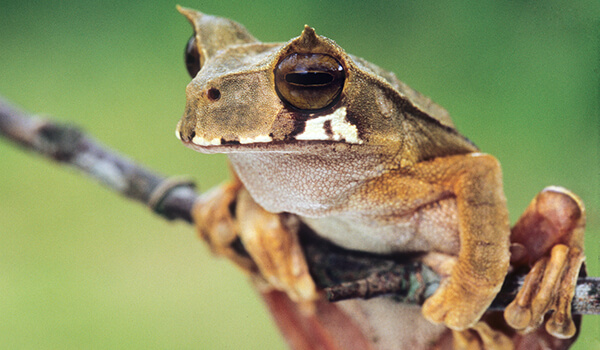
Photo: Common tree frog
Most tree frogs are herbivores when they are tadpoles. Adults are insectivorous and eat small invertebrates such as moths, flies, ants, crickets, and beetles. Larger species also eat small mammals such as mice.
Green tree frogs sometimes sit under outdoor lights at night to catch insects that are attracted to the light, but they are also capable of catching larger prey on the ground, including mice. Catching bats at the entrance to the cave has also been reported.
Adult gray tree frogs mainly prey on various types of insects and their own larvae. Ticks, spiders, lice, snails and slugs are common prey. They may also occasionally eat small frogs, including other tree frogs. They are nocturnal and hunt in the undergrowth of forests on trees and shrubs. As tadpoles, they eat algae and organic detritus found in the water.
Frogs with red eyes — carnivores that feed primarily at night. The green color of the red-eyed tree frog allows it to remain hidden among the leaves of trees, waiting for the appearance of insects or other small invertebrates. Red-eyed tree frogs will eat any animal that fits their mouth, but their usual diet consists of crickets, moths, flies, grasshoppers, and sometimes even smaller frogs.
Photo: Frog Frog
Many male tree frogs are territorial, and defend their habitat with loud calls. Some species also defend their territory by shaking out vegetation that keeps other males away. Gray tree frogs — night view. They lie dormant in tree cavities, under bark, in rotten logs, under leaves and under tree roots. At night, they look for insects in trees, where they can climb vertically or move horizontally using specially adapted pads on their paws.
The red-eyed tree frog's eyes are used in a startle display called deimatic behavior. During the day, the frog camouflages itself by pressing its body against the underside of the leaf so that only its green back is visible. If the frog is disturbed, it flashes red eyes and shows its colored sides and paws. The color can surprise a predator long enough for the frog to escape. While some other tropical species are venomous, camouflage and fear are the red-eyed tree frog's only defense.
Fun fact: Red-eyed tree frogs use vibration to communicate. Males tremble and shake leaves to mark territory and attract females.
Green tree frogs are timid and most do not tolerate being treated well (although after many years in captivity, some will grow up to accept this). For most frogs, handling is stressful for them, which can affect their health.
Social Structure and Reproduction
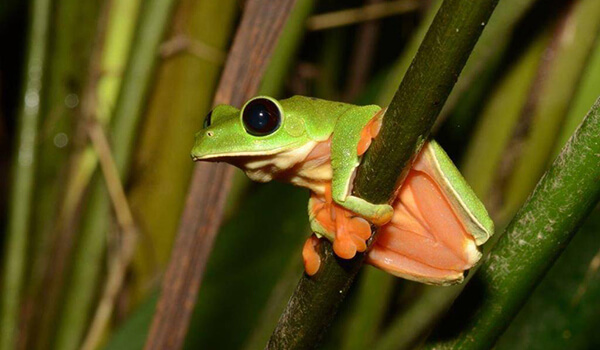
Photo: Poison Tree Frog
Reproduction of green tree frogs begins shortly after wintering and ends in July, peaking in mid-April and mid-May. Breeding sites are shallow ponds with well-developed vegetation, in which adult frogs return after migration up to 3-4 km long. Mating takes place at night. A single clutch (from 800 to 1000 eggs) is carried out in small clusters hanging on a submerged support (plant or tree). Metamorphoses of tadpoles occur after three months. The little frogs start to leave the water even when the resorption of their tails is not yet complete.
Gray tree frogs breed in late spring and early summer. They, like other types of frogs, tolerate negative temperatures. During the day, these frogs stay in the trees around the pond. In the evening, males call from trees and shrubs, but enter the pond after finding a mate. Females lay up to 2,000 eggs in small clusters of 10 to 40 that are attached to vegetation. Eggs hatch within five to seven days, and they turn into tadpoles 40-60 days after hatching.
The red-eyed tree frog breeds from October to March. Males try to attract females through their «croak». Once they have found their female, they fight other frogs in order to be able to grab onto the female's hind legs. The female will then proceed to latch on to the underside of the leaf while the other males will attempt to latch onto it. The female is responsible for supporting the weight of all the frogs, including the one tied to her, while they fight.
They then take part in a process called amplexus, where the mated pair hangs upside down under a layer of water. The female lays a clutch of eggs on the underside of the leaf, and then the male fertilizes them. Often the female becomes dehydrated and falls with her companion into the pond. From this point of view, the male must hold on to her, otherwise he may lose her to another frog.
Once the eggs hatch, the tadpoles are released into the water where they turn into frogs. Often tadpoles do not survive due to various predators that can be found in the water. Those that survive develop and turn into red-eyed tree frogs. Once they become frogs, they move to the trees with the rest of the red-eyed tree frogs, where they will stay for the rest of their lives.
Natural enemies of tree frogs
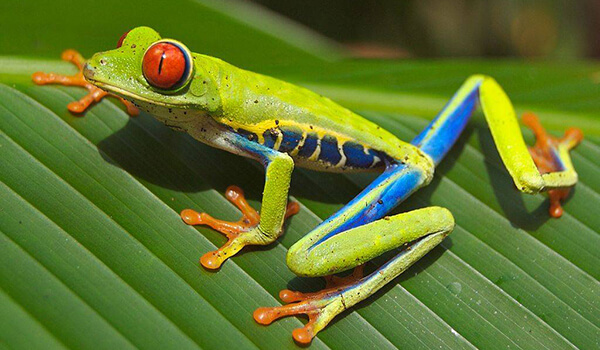
Photo: Tree Frog in Nature
Frogs survive well , despite strong predatory pressure from animals such as:
- snakes;
- birds;
- carnivorous mammals;
- fish.
Snakes are especially important predators of tree frogs. They primarily search for prey by chemical cues rather than visual cues, negating the camouflage protection that most tree frogs possess. In addition, many snakes are skilled climbers who can climb trees in the same way as tree frogs. Juvenile rat snakes (Pantherophis sp.) and tree boas (Corallus sp.) are among the species that prey heavily on frogs.
Otters, raccoons and squirrels feed on tree frogs. The sharp eyesight and dexterous paws of these mammals help them locate and manage amphibian prey. Frogs are sometimes caught in trees, but most often they are taken while moving to and from breeding grounds. At least one species of bat regularly precedes the arrival of frogs, able to distinguish edible from toxic species at the mere call.
Birds usually have excellent eyesight and are able to find even the most well-camouflaged tree frogs. Blue jays (Cyanocitta cristata), owls (Strix sp.) and red hawks (Buteo lineatus) — these are species that regularly feed on tree frogs.
It is important to remember that most frogs, including tree frogs, spend the first part of their lives in the water as tadpoles. At this time, they are hunted by other amphibians, insects and, most importantly, fish. Many tree frogs, such as gray tree frogs (Hyla versicolor), avoid fish predation of their young by only laying their eggs in fish-free water, such as temporary puddles. Other frogs, such as green tree frogs (Hyla cinerea), are resistant to fish pressure for reasons that are not well understood.
Predators of red-eyed tree frogs are usually bats, snakes, birds, owls, tarantulas, and small alligators. Tree frogs use their bright colors as a defense mechanism to stun their predators (frightened coloration). While their predators use sight to hunt, once their eyes are on prey, they are often startled by the shockingly bright colors that leave only a “ghostly image” of the red-eyed tree frog where it originally was.
Interesting fact: Many tree frogs have brightly colored (blue, yellow, red) areas of the body, such as paws or eyes. If threatened by a predator, they will suddenly flash these colored areas to startle it, allowing the frog to jump out.
Population and species status
h2>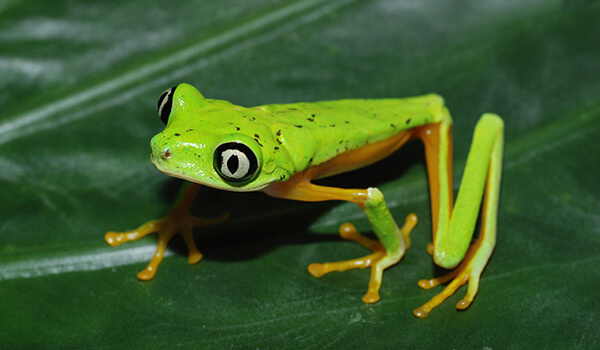
Photo: What a tree frog looks like
The tree frogs featured more than 700 species worldwide, found in most of North, Central and South America, as well as in Australia and New Guinea. Historically, frogs have been an indicator species, evidence of the health of an ecosystem or its impending vulnerability. Not surprisingly, the world's amphibian population has declined in recent years.
Research indicates that threats to red-eyed tree frogs include chemical pollution from pesticides, acid rain and fertilizers, the introduction of alien predators, and increased exposure to ultraviolet radiation from ozone depletion, which can damage fragile eggs. Although the red-eyed tree frog itself is not endangered, its rainforest home is under constant threat.
Global warming, deforestation, climatic and atmospheric changes, wetland drainage and pollution have led to a sharp decline in the number of red-eyed tree frogs in the tropical forests of Central and South America.
The population of green tree frogs, like many frogs, also has declined in recent years. This species is long-lived and can live for over 20 years. Because of this longevity, population declines went unnoticed for several years. Adults are still seen and heard regularly, but young frogs are becoming rare.
Frog Conservation
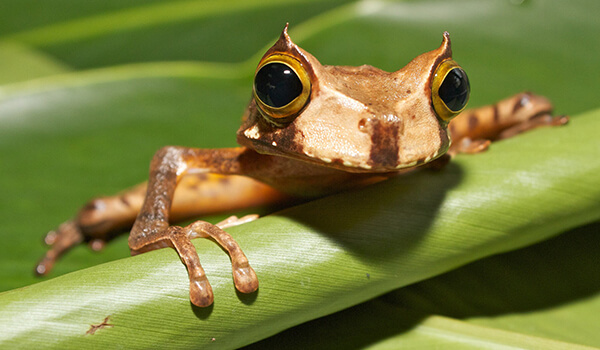
Photo: Tree Frog from the Red Book
The main actions to improve the conservation status of tree frogs are aimed at maintaining and promoting a vital, long-term viable population of medium to large in a complex of open solar reservoirs or at maintaining medium and large single reservoirs with extensive aquatic vegetation and extended shallow water areas. Waters should be optimized as needed, such as through periodic water management, bank trimming, or the removal and minimization of fish populations, or ensuring that fish farming is as wide as possible.
Improving the water balance should also focus on stabilizing high groundwater levels in wetlands and lowlands, as well as maintaining and developing dynamic lowland areas and extensive wetlands, and creating retreat zones in riverbeds. All annual tree frog habitat should not be crossed or restricted by busy roads.
In suitable habitat where tree frogs are found, artificial ponds can be dug to provide additional breeding ground. While artificial ponds may provide additional habitat, they should not be considered as a replacement for existing natural ponds. Habitat protection should be the highest priority for tree frog conservation.
The tree frog is a small species of frog that spends its life in trees. True tree frogs live in forests and jungles in warmer regions around the world. Although tree frogs can grow to a wide variety of sizes, most species are very small because they rely on leaves and thin branches to support their weight.

